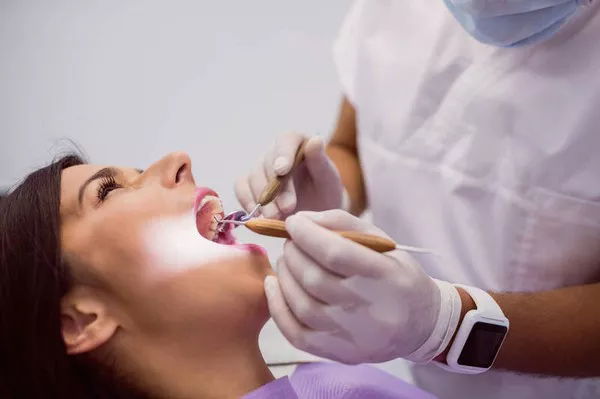Dental implants have revolutionized modern dentistry, providing a reliable and long-lasting solution for replacing missing teeth. While the benefits of dental implants are well-established, patients often have questions about the recovery process, including how long they can expect to experience pain after the procedure. Understanding the timeline of post-implant discomfort, as well as effective strategies for managing pain, is essential for patients considering or undergoing dental implant treatment. In this article, we delve into the factors influencing pain after a dental implant procedure, the typical duration of discomfort, and practical tips for pain management during the recovery period.
Understanding Dental Implant Surgery
Dental implant surgery involves the placement of titanium posts into the jawbone to serve as artificial tooth roots. Once these posts integrate with the bone, they provide a stable foundation for attaching replacement teeth, such as crowns, bridges, or dentures. While the surgical procedure itself is relatively straightforward, the recovery phase is crucial for successful implant integration and long-term oral health.
Factors Influencing Post-Implant Pain
Several factors contribute to the level and duration of pain following a dental implant procedure:
Surgical Complexity: The complexity of the surgery, including the number of implants placed, the need for bone grafting, and the location of the implants, can impact the extent of post-operative pain.
Individual Pain Threshold: Each person’s pain tolerance varies, influencing how they perceive and manage discomfort.
Overall Health: A patient’s overall health and medical history can play a role in how their body responds to the surgical procedure and the healing process.
Follow-Up Care: Adherence to post-operative care instructions, including oral hygiene practices and dietary restrictions, can influence the recovery timeline.
Typical Duration of Post-Implant Pain
The duration of pain after a dental implant procedure can vary widely among individuals. However, here’s a general timeline of what patients can expect:
Immediate Post-Operative Period: It’s common to experience some discomfort and swelling immediately after the surgery due to the local anesthesia wearing off. This discomfort is often manageable with prescribed pain medications.
First Few Days: The first few days after surgery are typically the most uncomfortable. Patients may experience mild to moderate pain, swelling, and possible bruising around the implant site.
First Week: Pain and swelling tend to peak within the first week and then gradually subside. Patients may need to continue using pain medications during this period.
One to Two Weeks: By the end of the first to second week, most patients begin to experience significant relief from pain and swelling. Healing progresses, and discomfort becomes more manageable.
Three to Four Weeks: By this point, most patients have significantly reduced pain and swelling. However, some residual discomfort or sensitivity may persist as the surgical site continues to heal.
Managing Pain During Recovery
While discomfort is a natural part of the recovery process, there are several effective strategies for managing post-implant pain:
Pain Medications: Follow your dentist’s prescribed pain medications as directed. Over-the-counter pain relievers can also be effective for managing mild discomfort.
Cold Compresses: Applying cold compresses to the swollen area during the first 48 hours can help reduce swelling and numb the area, providing relief.
Oral Hygiene: Follow your dentist’s recommendations for oral hygiene, but be gentle around the surgical site to avoid irritation.
Soft Diet: Stick to a soft diet during the initial days to avoid putting excess pressure on the implant site.
Rest and Elevation: Adequate rest and keeping your head elevated while lying down can help minimize swelling and discomfort.
Avoid Smoking: Smoking can interfere with the healing process. If you smoke, try to avoid it during the recovery period.
Hydration: Staying hydrated can contribute to overall healing and comfort.
When to Seek Professional Help
While discomfort is expected during the recovery period, there are instances where you should seek professional help:
Severe Pain: If you experience severe or worsening pain that is not alleviated by pain medications, contact your dentist or oral surgeon.
Excessive Swelling: Swelling that doesn’t subside or worsens after the first few days should be evaluated by a dental professional.
Persistent Symptoms: If you have persistent symptoms such as bleeding, pus, fever, or signs of infection, seek immediate medical attention.
Conclusion
Pain following a dental implant procedure is a temporary aspect of the recovery process. The duration and intensity of pain can vary based on factors such as surgical complexity, individual pain tolerance, and post-operative care. Most patients experience the most discomfort during the initial days to weeks after the procedure, with gradual improvement as the healing process progresses. Effective pain management strategies, including prescribed medications, cold compresses, and following post-operative care instructions, can significantly alleviate discomfort and promote a smooth recovery. By understanding the typical timeline of post-implant pain and knowing when to seek professional help, patients can embark on their journey toward a restored smile and improved oral health with confidence and ease.
Relate Topics:





























